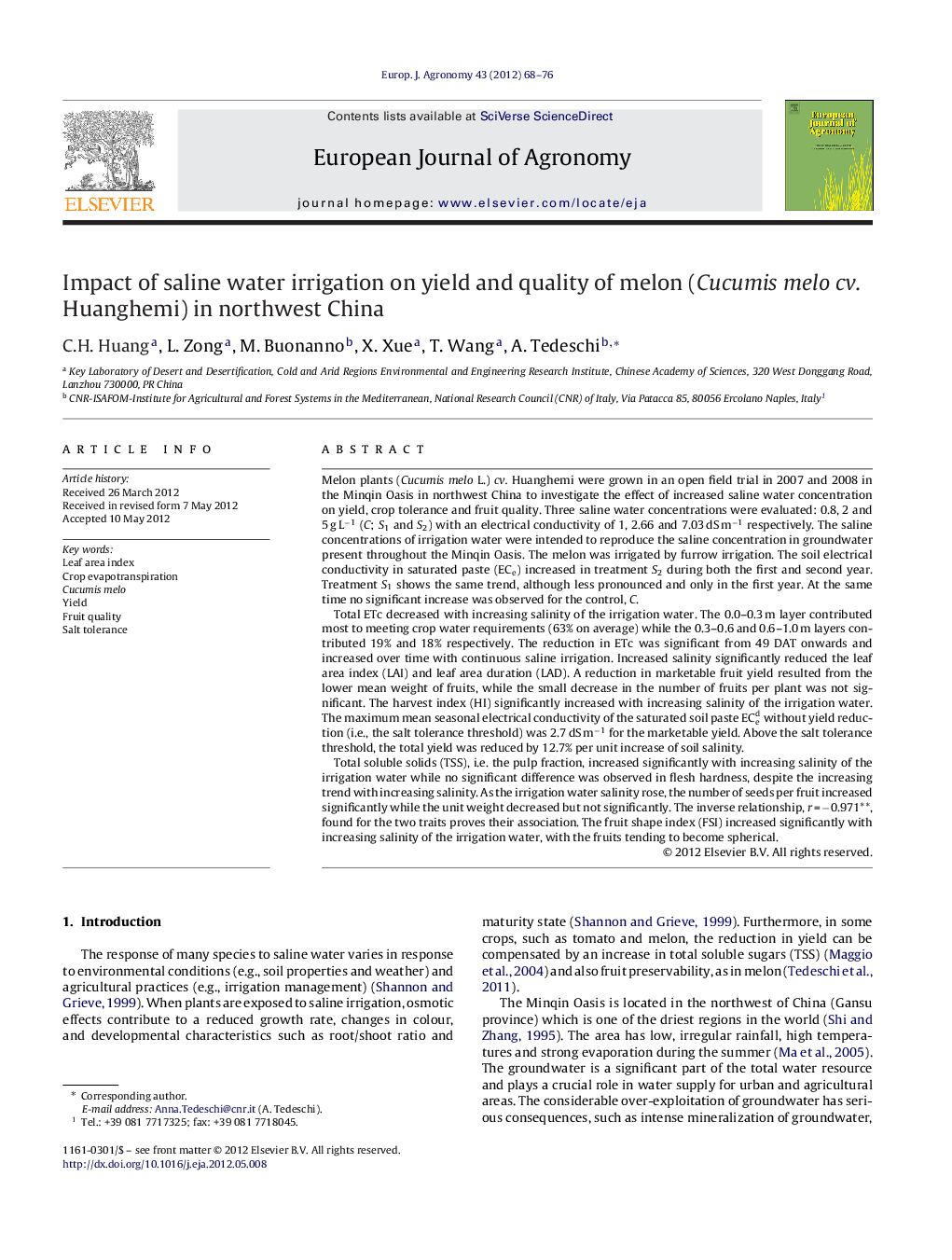| کد مقاله | کد نشریه | سال انتشار | مقاله انگلیسی | نسخه تمام متن |
|---|---|---|---|---|
| 4509134 | 1624483 | 2012 | 9 صفحه PDF | دانلود رایگان |

Melon plants (Cucumis melo L.) cv. Huanghemi were grown in an open field trial in 2007 and 2008 in the Minqin Oasis in northwest China to investigate the effect of increased saline water concentration on yield, crop tolerance and fruit quality. Three saline water concentrations were evaluated: 0.8, 2 and 5 g L−1 (C; S1 and S2) with an electrical conductivity of 1, 2.66 and 7.03 dS m−1 respectively. The saline concentrations of irrigation water were intended to reproduce the saline concentration in groundwater present throughout the Minqin Oasis. The melon was irrigated by furrow irrigation. The soil electrical conductivity in saturated paste (ECe) increased in treatment S2 during both the first and second year. Treatment S1 shows the same trend, although less pronounced and only in the first year. At the same time no significant increase was observed for the control, C.Total ETc decreased with increasing salinity of the irrigation water. The 0.0–0.3 m layer contributed most to meeting crop water requirements (63% on average) while the 0.3–0.6 and 0.6–1.0 m layers contributed 19% and 18% respectively. The reduction in ETc was significant from 49 DAT onwards and increased over time with continuous saline irrigation. Increased salinity significantly reduced the leaf area index (LAI) and leaf area duration (LAD). A reduction in marketable fruit yield resulted from the lower mean weight of fruits, while the small decrease in the number of fruits per plant was not significant. The harvest index (HI) significantly increased with increasing salinity of the irrigation water. The maximum mean seasonal electrical conductivity of the saturated soil paste ECed without yield reduction (i.e., the salt tolerance threshold) was 2.7 dS m−1 for the marketable yield. Above the salt tolerance threshold, the total yield was reduced by 12.7% per unit increase of soil salinity.Total soluble solids (TSS), i.e. the pulp fraction, increased significantly with increasing salinity of the irrigation water while no significant difference was observed in flesh hardness, despite the increasing trend with increasing salinity. As the irrigation water salinity rose, the number of seeds per fruit increased significantly while the unit weight decreased but not significantly. The inverse relationship, r = −0.971**, found for the two traits proves their association. The fruit shape index (FSI) increased significantly with increasing salinity of the irrigation water, with the fruits tending to become spherical.
► Saline irrigation reduced yield but improved quality of melon cv. Huanghemi.
► Irrigation with 2 g L−1 saline water is sustainable after one initial fresh water irrigation.
► Crop water use decreased with increasing salinity of irrigation water.
► The Huanghemi melon is moderately sensitive to saline irrigation water.
Journal: European Journal of Agronomy - Volume 43, November 2012, Pages 68–76